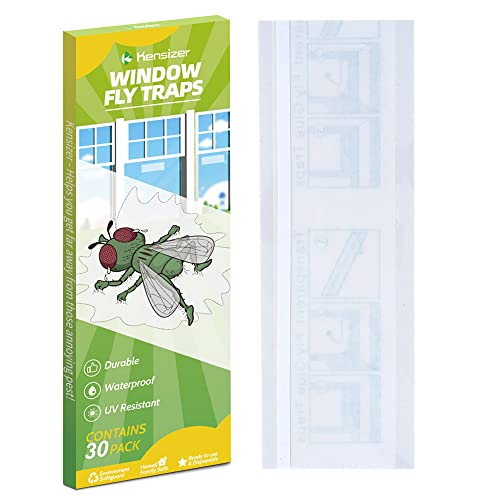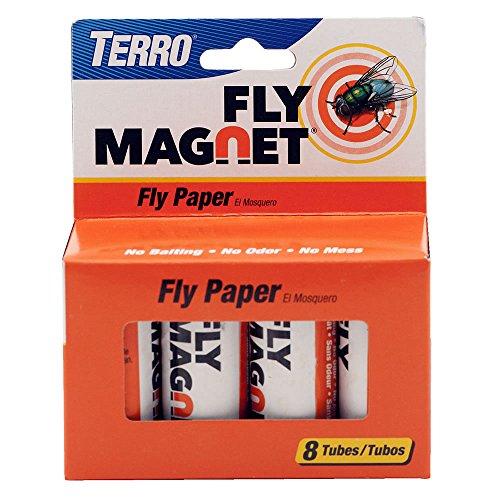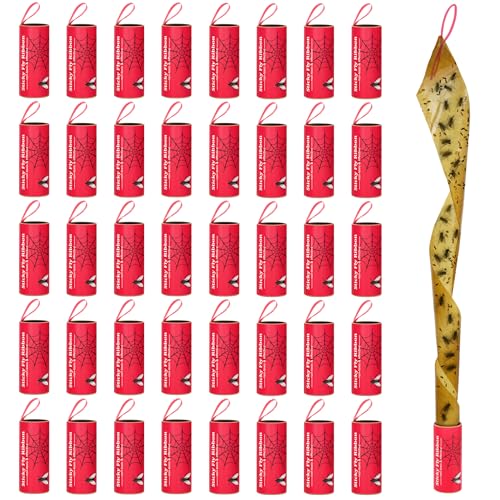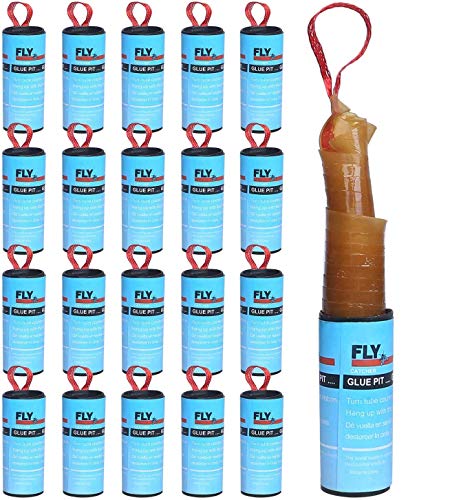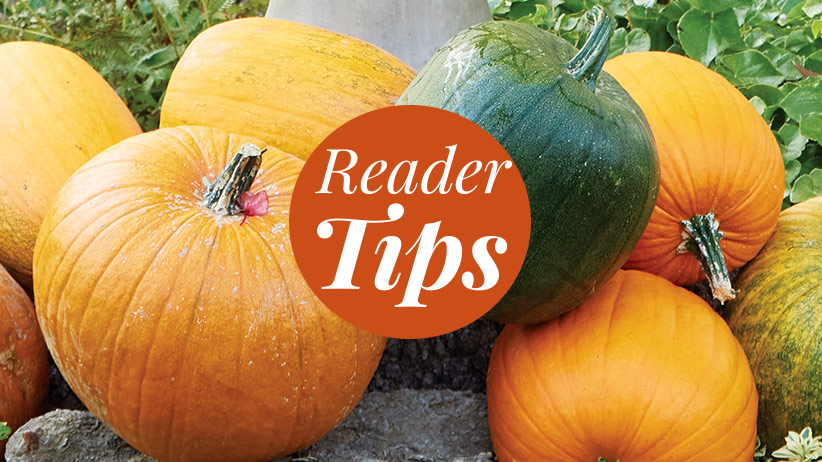Picture this: you’re standing in your kitchen with the window open on a warm summer day. All of a sudden, you hear a buzzing in your ear and you start swinging your hand in the air as you try to swat away the fly that is now in your home. Whether it’s a single fly or an entire infestation, flies can be a major nuisance and a serious cause of worry due to how unhygienic they are. But don’t panic! Simply check out our guide to flypapers instead. To get you started, take a peek at our #1 recommendation for flypapers: the Kensizer Window Flypapers.
Picture this: you’re standing in your kitchen with the window open on a warm summer day. All of a sudden, you hear a buzzing in your ear and you start swinging your hand in the air as you try to swat away the fly that is now in your home. Whether it’s a single fly or an entire infestation, flies can be a major nuisance and a serious cause of worry due to how unhygienic they are. But don’t panic! Simply check out our guide to flypapers instead. To get you started, take a peek at our #1 recommendation for flypapers: the Kensizer Window Flypapers.
Our Top Picks For Flypapers
A Buyer's Guide: Best Flypapers
Now that you know how serious this fly problem is, you should be looking for a suitable solution to this problem. The next step is to look for the best flycatching paper that is available out there. While flypapers are widely available, you should be fully aware of the factors that you need to consider before you can opt for a certain selection.
Why Flytraps Are Essential to Have
All of us are aware of the annoyance that flies can bring. Unfortunately, that is not the only thing that we should be worried about. Believe it or not, flies are extremely unhygienic and can be a major source of virus and bacteria transmission that can cause a lot of illnesses. These flies are commonly found buzzing around and feeding on disgusting stuff including sewage, trash cans, rotten food, and fecal matter.
Adding to this flies also pick up bacteria, viruses, and fungi from these places and transmit all of these things to your house. Food poisoning, cholera, and typhoid are just a few examples of the illnesses and infections that creatures can bring with them. Flies will also lay eggs in your trash cans if they start getting too comfortable, and this is certainly something that you want to avoid.
Consequently, it is essential to have an effective solution in place, to protect your family and yourself from a long list of diseases and infections.
What Attracts Flies?
Before setting on flypaper, you need to figure out what it is that is attracting all those flies to your house, as well as what you can do to minimize it.
Leftover food
One of the biggest reasons for flies to visit urban households is leftover food that has started rotting. Food left in the open starts to rot pretty quickly, and this is an invitation to those annoying flies to visit your house and begin spreading germs. You need to make sure that you’re properly disposing of leftover food if there is any.
Open sewage
A sewage mechanism that is not properly concealed or covered will also attract a lot of flies. This can be a major cause of viral and bacterial outbreaks in your house, making it all the more important for you to make sure that your sewage-disposal is properly managed.
Garbage
You’ll often find flies hovering over garbage cans. To deter flies, you should make sure that your garbage can has a proper lid and that it remains closed at all times.
Pets
Flies usually won’t be attracted to pets. Instead, certain flies are attracted to their fecal matter. To deter these kinds of insects, make a habit of cleaning your pet’s bathroom spot regularly. Spraying it down with a hose set on high pressure should be enough to break up any lingering deposits.
What Are the Different Types of Flytraps?
The most commonly found fly trapping mechanisms include container flytraps and flypapers.
Container Flytraps v. Flypapers
As suggested by the term itself, a container flytrap will use something that attracts flies as bait. Once they enter the container, it is impossible for the flies to leave and they find themselves trapped. Once the container is full, the flies can be disposed of or exterminated. Some container fly traps are disposable and need to be thrown out once they’re full. Other times, some flypapers and fly traps are reusable, requiring you to wash the exterior off before setting it out again.
Flypapers, on the other hand, are simple sticky papers that are supposed to attract flies. Once flies land on the paper, the sticky substance makes it impossible for them to fly away and they’re stuck there until they die. Flypapers are not the most aesthetic-looking types of traps, but they’re pretty effective. Moreover, since they are disposable you don’t need to worry about cleaning them.
Baited Fly Traps v. Other Alternatives
Some fly strips contain materials that attract flies as bait. Then there are those fly traps that rely on flies landing onto the trap themselves. Fly strips with bait are usually slightly messier and can have an unpleasant smell. For indoor use, fly strips without bait tend to be the preferred choice since they’re cleaner and they would usually suffice. For outdoor use, you can opt for fly traps with bait if you’re able to manage (or don’t mind) the smell.
Other Things to Consider Before Getting a Flypaper
Here are a few important factors to keep in mind:
Odor
The first thing you need to consider is the odor flypaper emits, especially when you’re buying one for indoor use. Flypapers with a bad odor can be really unpleasant for the indoors, which is why you need to consider this factor.
Size
The size of a fly strip is another important factor that you should consider. The decision, of course, depends on your requirements. If you’re looking to cover a larger space, bigger strips would be most suitable. If you’re planning to conceal these strips at various spots, smaller traps would be a better choice.
Environmental impact
Since flytraps use all kinds of chemicals to get the job done, you need to be mindful of the environmental impact of these. Some companies use toxic chemicals that are not safe for the environment, let alone your kids and pets. And even if you don’t have pets or children, non-toxic strips tend to be the most convenient as you don’t have to worry about washing your hands after handling them.
Traceable
Fly strips that stick onto your windows, counters, and doors can sometimes leave an ugly trace when you peel them off. If this is something you know you won’t like, consider purchasing flypaper that doesn’t have these features.
People Also Asked
Are flypapers safe for pets?
Flypapers that do not use chemical agents are usually safe for pets. However, you should try to keep fly strips out of the reach of your pets as their sticky nature can prompt them to stick to your pet’s fur. If the flypaper is toxic, it’s critical for you to bathe your pet thoroughly to remove any lingering properties of the product. If you don’t do this, your pet may groom themselves and ingest the chemicals, leading to various serious health issues.
What am I supposed to do once the flypaper is full?
Since fly strips are disposable, you can easily throw a strip away once it is full and replace it with a new one. If you’re looking for an eco-friendly variation, consider purchasing a flytrap that is labeled as reusable and has plenty of customer reviews to prove it.
Can I use a flystrip for other bugs?
Absolutely! Flypaper is designed to trap all sorts of bugs.
Will fly traps solve the root of my fly problem?
While fly traps will kill the adult form of most insects, they won’t target the larvae. If you’re dealing with indoor pests, combining your fly traps with an organic neem oil solution can prove beneficial and kill all stages of what’s crawling beneath the surface layer of your soil.




